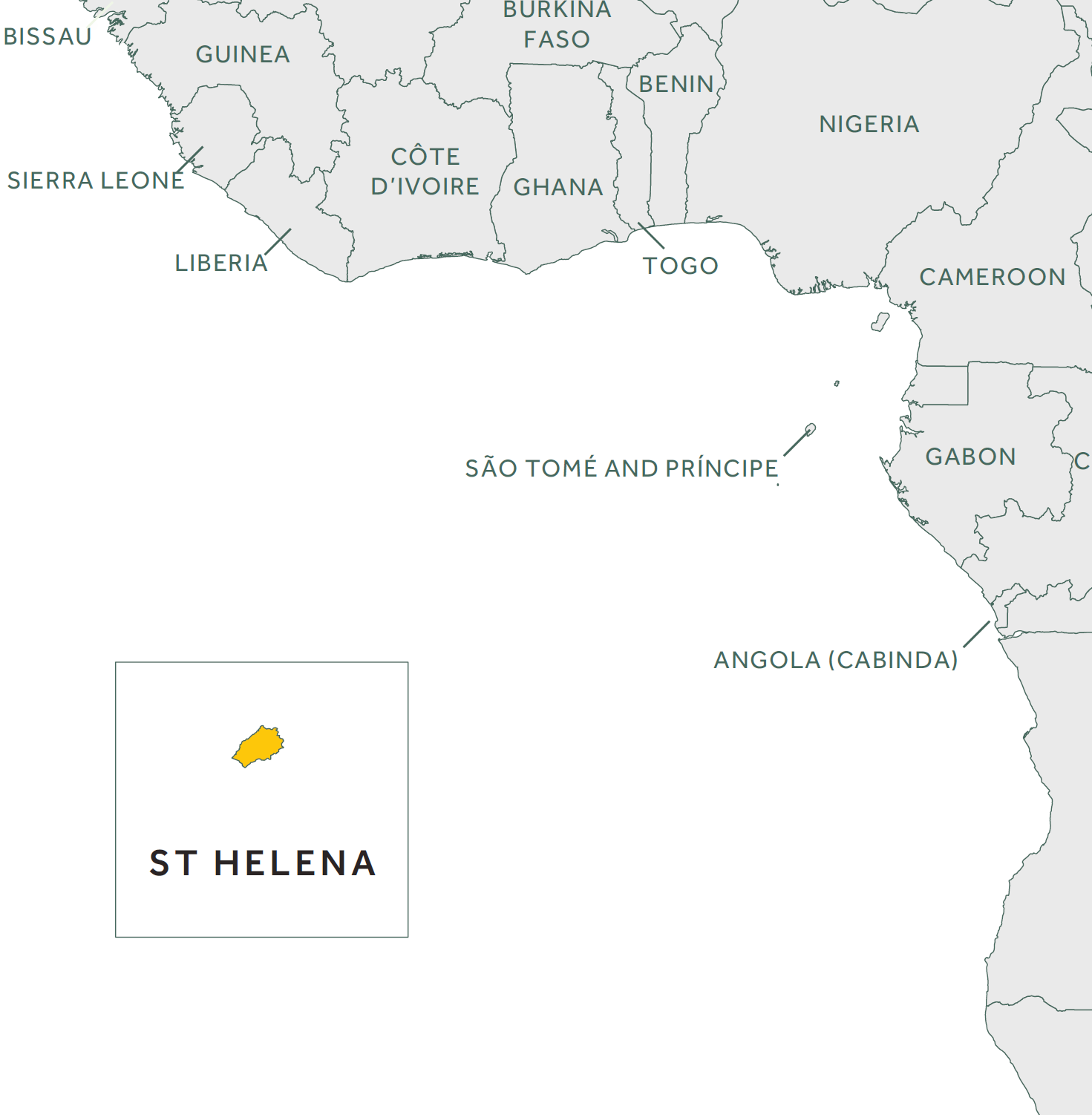Some of Our St Helena Holiday Ideas
Discover our full range of St Helena holiday ideas at Rainbow. Whether you're a keen birder looking to see the endemic St Helena plover (wirebird) or simply want to enjoy the island at a relaxed pace with a boat cruise to spot whale sharks, we can tailor your ideal experience.

Discover Saint Helena
11 nights from £4,879 p/p

Express St Helena
7 nights from £3,785 p/p

Cape Town and St Helena Combination
9 nights from £4,035 p/p
Our expertise in St Helena

I’d love to create your perfect destination experience to St Helena . Give me a call and I’ll share my first-hand expertise so you get the most from your trip.
Travel Specialist
Candice's review
With untouched volcanic landscapes, forested mountains descending to subtropical interiors and craggy coastlines, collectively boasting superb biodiversity, this is a destination with huge potential for adventure and off-the-beaten-track travel experiences. Up until recently, weekly flights year-round have meant that visitors must spend at least a week on the island. With twice-weekly flights now being introduced during the summer months, we still believe that St Helena is well deserving of at least a week's stay, but the increased flight frequency can give you more flexibility with your travel dates.
Candice's Top Tips
- If you want to spot whale sharks, make sure you plan your trip during their nearby migration season, between January and March.
- When in the district of St Paul's, tour Plantation House to meet the island’s most iconic resident; a 192-years-old Seychelles giant tortoise called Jonathan.
- St Helena offers you the opportunity to see a variety of birds such as the endemic St Helena plover (wirebird) and white or fairy tern.
Best Time To Visit St Helena
Best time
Good time
Average time
Quick Country Facts
Time Zone:GMT
Capital:Jamestown
Currency:GBP
Why visit St Helena?
The island’s superb biodiversity and untouched landscapes have long attracted a handful of savvy travellers and keen wildlife enthusiasts who could only reach St Helena by taking a five-day voyage by boat from Cape Town. In 2017, the first commercial flights commenced operation, flying once weekly from Johannesburg and via Windhoek to reach the island. Recently, mid-week flights have also begun operating, offering more flexibility for your St Helena holiday.
Candice Buchan
Travel Specialist
Culture & History
Though only small, the island of St Helena plays a big part in world history. Found by Portuguese explorers sailing the South Atlantic Ocean in 1502, it briefly became a Dutch possession, and then British (initially under the East India Company and then the Crown). It was a vitally important port of call during the development of the British Empire and remains a significant retainer of colonial history.
Being one of the most remote islands in the world, St Helena was also used as a place of exile for particularly problematic prisoners. These include approximately 6,000 Boers, the famous figure of King Dinuzulu and Napoleon Bonaparte, who died on the island in 1821. One of the world's best Napoleonic museums, Longwood House, which tells of his life after exile – including the room in which he died in.
Explore Jamestown, nestled in a narrow valley in the north, to get a sense of local life. Here, there are historic buildings showcasing unspoiled Georgian architecture, like the oldest Anglican church in the southern hemisphere – Saint James. Designated as a Grade I listed building, it's one of the 'Seven Wonders of St Helena'. Also Grade I listed is Jacob's Ladder, a staircase overlooking Jamestown.
Our Discover Saint Helena itinerary includes a knowledgeable guide, who'll provide insights on the extraordinary sights and views you'll come across. Prices start from £XXXX per person for 11 nights.
Adventures On Land & Underwater
Crystal-clear, sun-touched waters provide the perfect conditions for snorkelling and scuba diving. The nature of the nearby dive sites vary, from rugged reefs and enclosed caves to smooth cobbles and sand, though the wealth of opportunities to meet magnificent wildlife remains the same across all sites.
Sea temperatures range from 19—25°C and visibility from 16—130 feet. For peak visibility, it's best to visit from December to May. Dives vary between 40—130 feet and offer a range of diving opportunities.
If you're a nature lover, you'll adore experiences on the west coast such as the Blue Point Post Box Walk. This entry level hike transports you through amazing landscapes, such as the habitat restoration area where endemic rosemary and scrubwood paints the area a healthy shade of green and white.
Or, why not head to Sandy Bay on the southeast coastline? It has a large black sand volcanic beach, on which you can stretch out and simply relax or spend time enjoying a delicious picnic in the sun.
Further Reading: Top 10 Things to Do on St Helena
Looking for inspiration?
You'll find expert travel guides, holiday ideas and insider tips now on the Rainbow blog
Why Choose Us?
Passionate travel experts
- We've been leading wildlife travel since our first South Africa tours over 25 years ago
- Our Travel Specialists have lived in their specialist area for years
- We work with local guides to immerse you deeper in our diverse range of experiences
Personal & tailor-made
- You'll speak to your own expert who'll share their first-hand knowledge
- We'll make your itinerary seamless with 24/7 emergency contact available
- Your Travel Specialist will listen to ensure you have the best chance of seeing the wildlife you love
Responsible by nature
- We take care to actively contribute to the conservation of environments we visit
- For select countries, we make a charitable donation on your behalf when you make your booking
- We've partnered with conservation experts and NGOs to curate responsible tours
For the latest travel advice from the Foreign, Commonwealth and Development Office check www.gov.uk/travelaware




